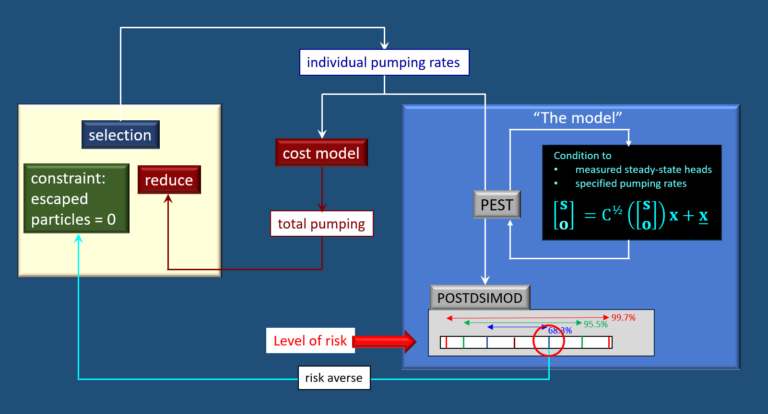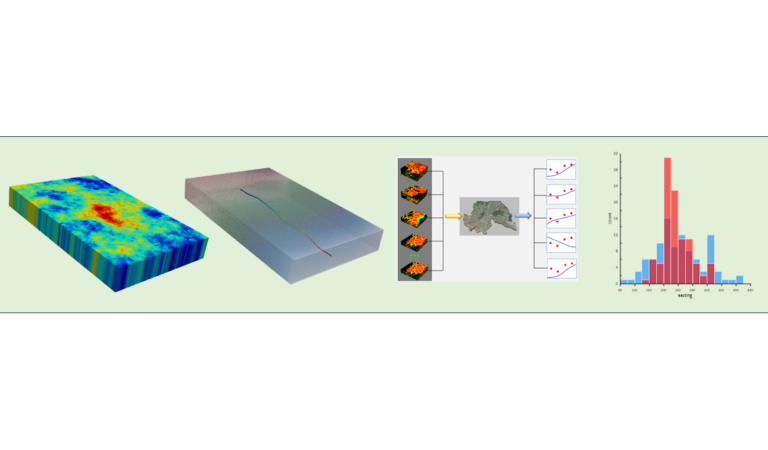
Modelling an Open Loop Low Temperature Geothermal System
Download a slideshow and an accompanying comprehensive tutorial that demonstrates the use of the MODFLOW 6 Groundwater Energy Transport (GWE) model in simulating an open

Download a slideshow and an accompanying comprehensive tutorial that demonstrates the use of the MODFLOW 6 Groundwater Energy Transport (GWE) model in simulating an open

This tutorial re-visits DSIVC or “data space inversion with variable control”. DSIVC is a numerically cheap way to undertake optimization under uncertainty. The present tutorial

This tutorial demonstrates some unique features of PLPROC. It shows you how to do some special things, in both deterministic and stochastic ways. These include

This comprehensive tutorial demonstrates fast, efficient calibration of a complex 3D model. It complements a previous tutorial on a similar subject. However it shows how

Optimization under uncertainty is notoriously numerically intensive. However its numerical burden can be reduced if data space inversion (DSI) is used to construct a surrogate

Ensemble space inversion (ENSI) enables efficient, regularisation-constrained calibration of complex, highly-parameterised models. This tutorial demonstrates how linear analysis can be undertaken in partnership with the

Ensemble space inversion (ENSI) is implemented through the PEST_HP suite (version 18). Using ENSI you can calibrate a complex model quickly. The calibration subspace is comprised

Building and history-matching a three-dimensional model is a difficult procedure. The third dimension increases parameter requirements, model run times, and model output uncertainty. Ideally, predictive

This tutorial explores the use of “conceptual points” as a precursor to model parameterisation. Expected hydraulic properties are provided at these conceptual points. Just as

This tutorial explores construction of the interface between PEST/PEST++and a simple MODFLOW/MODPATH model, and how to then subject that model to history-matching and uncertainty analysis–including
GMDSI is managed by the National Centre for Groundwater Research and Training (NCGRT) and administered by Flinders University.